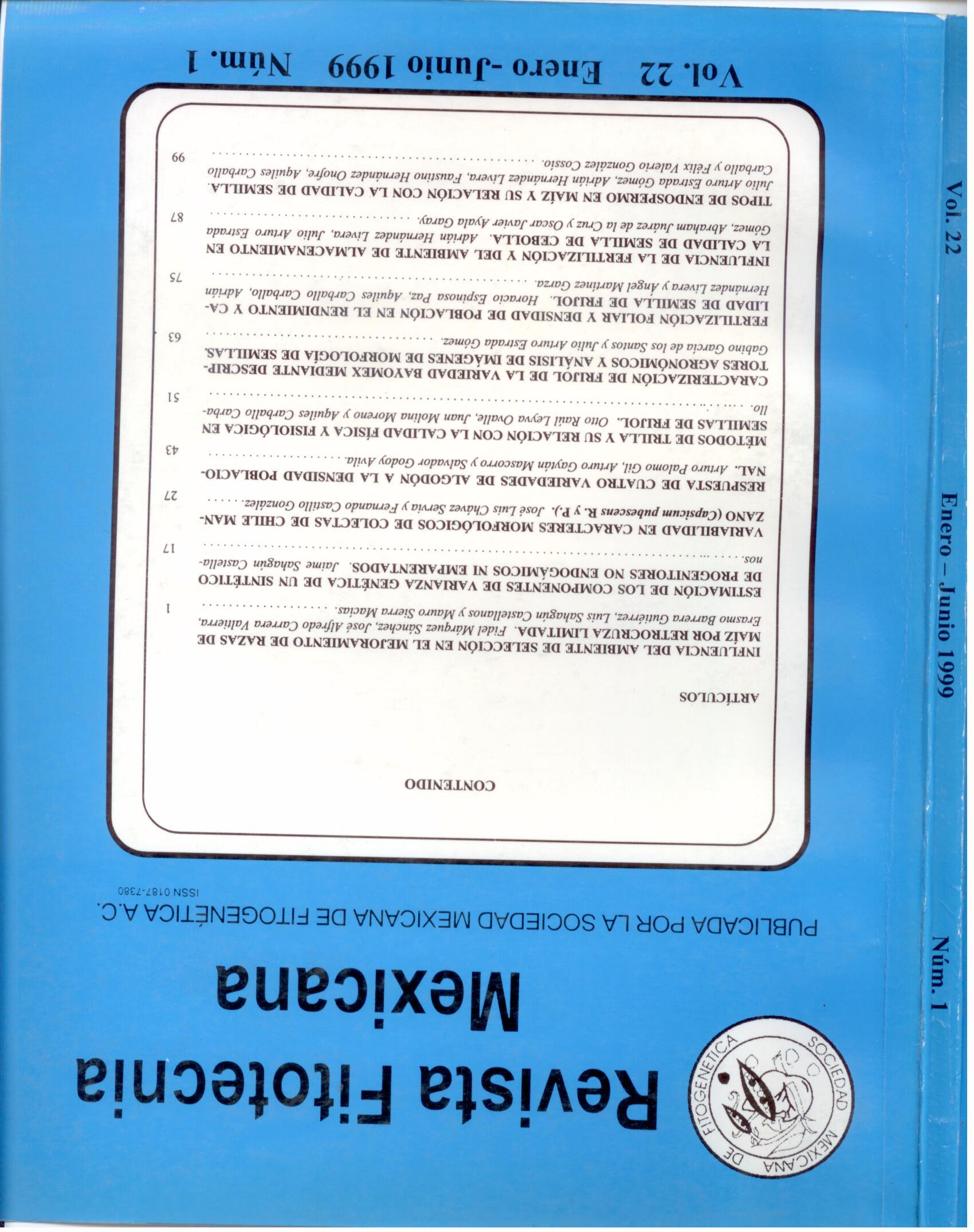THRESHING METHODS AND THEIR RELATION WITH THE PHYSICAL AND PHYSIOLOGICAL QUALITY OF BEAN SEEDS
Main Article Content
Abstract
In order to measure the physical and physiological quality of dry seeds, in four beans varieties (Phaseolus vulgaris L.) in response to threshing methods: manual threshing, by and by thresher, a research was carried out in the area of Montecillo, Mexico. To determine the physical and physiological quality of the material inmersion tests in chlorine, tetrazolium and standard germination were carried out. In the first test, dispersion of damage (bladders) on the surface of the seed at levels of 25, 50, 75 and 100% were detennined. In the second test the damage levels used were absence, light and severe. Percentage of germination and viability, internal damage and seedlings dry weight were determined for the third test. The results showed that all the threshing methods, except the manual method, had a 25% of seminal cover damage. The internal damage was observed in 3% of manual threshing, 14% in beating, 25% by tractor, and 50% by the thresher. The results of the germination test were: 95, 86, 72, and 42% for each threshing method, respectively; in the germination test it was observed that 1, 20, 17, and 69% of seedlings had damage by the previously cited methods. From the obtained results it was concluded that 1) the physical quality of bean seeds was reduced in 25% as a consecuence of the threshing methods, 2) the threshing methods caused a decrease up to 53% in the expression of physiological quality of the seeds.

